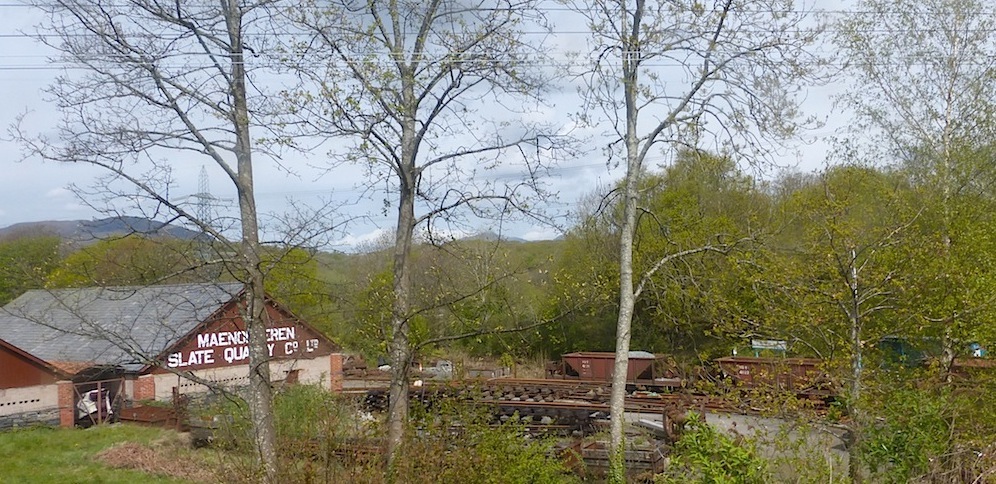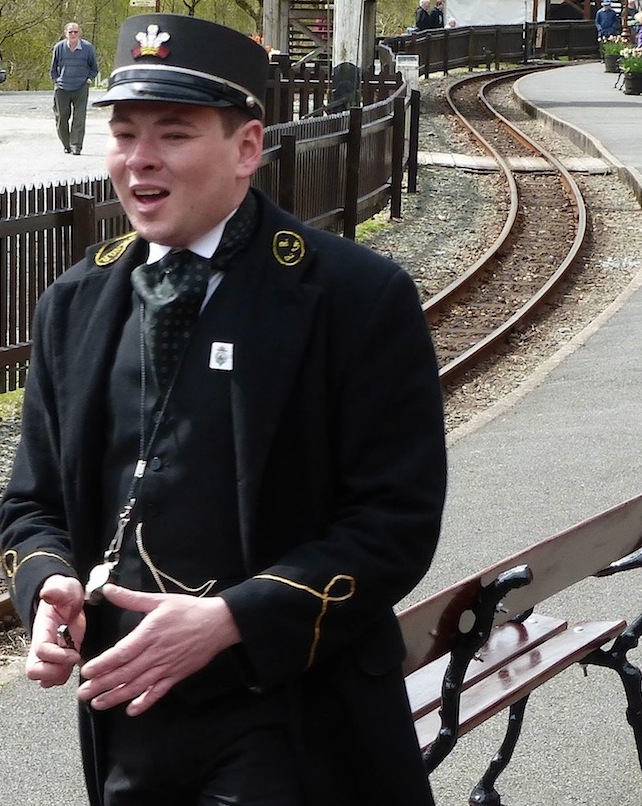Photographs by the present author: you may use them without prior permission for any scholarly or educational purpose as long as you (1) credit the photographer and (2) link your document to this URL in a web document or cite The Victorian Web in a print one. Click on the images to enlarge them.


The Double Fairlie locomotive Merddin Emrys. This was designed by George Percival Spooner, and built for the Ffestiniog Railway, N. Wales, a narrow gauge railway which was opened in 1836 (Simmons 349), and is said to be the world's oldest (see "About Us"). The locomotive, the third of its kind for the railway company, was built in 1879 at the company's own workshops at Boston Lodge and "has spent its entire working life on the Festiniog Railway" ("Merddin Emrys"). It is seen here coming into the station of the slate-mining town of Blaenau Ffestiniog, with the mountains of Snowdonia in the background, starting its journey at 710 feet above sea-level, down to Porthmadog on the coast, thirteen and a half miles away.


Left: A closer view of the locomotive. Right: The date (1879) and Works (Fairlie's) can be seen on the brass plate here.
Although the railway was closed in 1946, Merddin was in service again from 1961. After a spell of being powered by oil, it was reconverted to its original coal-firing again in 2007. It now takes tourists over the old route to and from the slate quarries here to the wharf and slate quays at the harbour in Porthmadog. From here, Welsh slate for slate roofing, needed in huge quantities during the Victorian housing boom, was once exported to London and elsewhere.


Two views of Tan-y-Bwlch water tank on the way, not as old as it might look, but giving some idea of the facilities needed for steam locomotives. What appears to be a signal box on the opposite side is also from the twentieth century, and actually houses a relay station for the automatic crossing here.



Station structures. (a) A halt at Moel Dduallt, opened in about 1880, though the shelter here has had to be rebuilt. (b) Tan-y-Bwlch station. (c) The platform at Tan-y-Bwlch
Tan-y-Bwlch station, officially opened in 1873 but probably in use before that, is about 443 feet above sea level, and less than eight miles from Porthmadog ("Tan y Bwlch.").


Left: The restored Maenofferen Quarry shed on the approach to Porthmadog. Right: Coming into Porthmadog past a signal box.
Maenofferen Quarry shed serves the quarry of the same name in Blaenau Ffestiniog. It is now owned by the nearby Llechwedd quarry, and still handles some crushed slate from their open cast mines there. The harbour itself goes back to 1821, when Parliament first approved of plans for building it (see Green 55). The Porthmadog Harbour Station was first opened in 1865, and the current building was opened in 1879.

The end of the line — arriving at the terminus, Porthmadog Harbour Station.
Jim Green praises the "effort, enthusiasm and success" of those who have revitalised the Ffestiniog Railway (55), and no one who has taken the line would disagree with him. The personnel all look as if they enjoy their work and there is a holiday atmosphere that would surely have surprised those who once worked long hours in the Victorian slate quarries.


Left: A cheerful conductor. Right: The old Custom House on Britannia Row overlooking the tracks at Porthmadog (now a B&B).
Related Material
- Side view of the Merddin Emrys locomotive
- Dinorwic Quarry in Llanberis
- Llangollen Railway (I)
- Llangollen Railway (II)
- Welsh Highland Railway
Bibliography
"About Us." Ffestiniog and Welsh Highland Railways. Web. 2 July 2017.
Green, Jim. Welsh Railways. Talybont, Ceridigion: 2001.
"Merddin Emrys." Festiniog Railway Heritage Group. Web. 2 July 2017.
Simmons, Jack. The Victorian Railway. Pbk ed. London: Thames and Hudson, 1995.
"Tan y Bwlch." Festipedia (Festiniog Railway Heritage Group). Web. 2 July 2017.
Created 2 July 2017